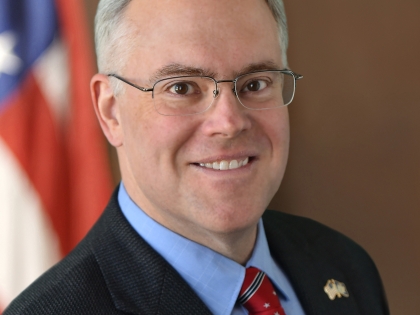
Environmental Conservation is About more than Adding Acreage to the Adirondack Park
October 23, 2025
A Legislative Column by Senator Dan Stec
Recently, Governor Hochul expressed her desire for the state to purchase 32,000 acres of Whitney Park, a 36,000-plus acre tract of land and lakes inside the Adirondack Park. This move, predictably, has been lauded by several environmental groups as a bold, necessary step in the effort to protect and preserve the Adirondacks. But the fact of the matter is that when it comes to conservation efforts inside the blue line, it feels like the governor and environmental advocates can’t see the forest for the trees.
Lately, much of the conservation efforts in the Adirondacks have been hyper-focused on adding to the total amount of publicly owned acreage in the park.
For five years, I’ve sponsored legislation to facilitate the sale of Camp Gabriels in the Town of Brighton in Franklin County, while ensuring that the funds from the sale go toward forest preserve acquisition in the Adirondack Park. While it’s passed the Senate each time, it gets held up in the Assembly. A major sticking point continues to be the amount of land to be added to the Forest Preserve. Meanwhile, the Camp Gabriels property lays dormant. Not only is that bad for our region financially, keeping a valuable property from being used as an economic driver, it is also an environmental concern. The longer the Camp Gabriels facility stays dormant, the risk of this blight becoming an environmental hazard increases. And that’s to say nothing of the fact that the shifting goalposts around Camp Gabriels - one of several closed, dormant prisons in the Adirondacks that’s in a state of deterioration - has only ensured that no new land is being added to the Forest Preserve while increasing the chances of long-term safety and environmental problems on these grounds.
But as noted above, acreage is only a small piece of environmental conservation. What about clean water? Currently, many communities in the Adirondack Park lack that and are in need of water and wastewater infrastructure support.
One of the highest profile cases of a water infrastructure crisis is in Tupper Lake. Village Mayor Mary Fontana highlighted this situation at the Adirondack Park Agency’s October meeting. As she outlined in this meeting, resolving it has a $20 million price tag. Mayor Fontana also commented that when village officials have reached out for state assistance, they’ve been told that Tupper Lake has exhausted its share of programs to fund this vital project. Despite claiming a lack of funds for a clean water initiative, environmental advocates have suggested the use of state Environmental Protection Funds or the Environmental Bond Act to purchase Whitney Park land that’s only 10 miles away. While advocates seek to use this funding for land purchases, it has been determined that the cost of statewide water and wastewater infrastructure needs far exceeds the total of these two funding sources.
It’s illogical. The state should not be making an investment in further land acquisition when it's already failing to meet the dire environmental needs of neighboring communities. Moreover, the state should not purchase additional land if it can’t care for the property it already owns.
The rapidly declining conditions at state-owned prison grounds and well-documented water infrastructure challenges across the Adirondacks underscore just how overextended state government has become in its stewardship responsibilities. If these prisons or drinking water lines were instead the responsibility of a private company and fell into these states of disrepair, there would be calls for a state investigation.
Given logistical hurdles and the impending $10 billion state budget deficit New York State faces, it will only be more challenging for communities inside the blue line to receive state financial support for projects. The environmental advocates that have the governor’s ear don’t seem to share those concerns. To them, increasing the state-owned acreage inside the Adirondack Park is the ultimate - and only - endgame. That approach isn’t only shortsighted, it shortchanges the reality of life inside the park.
Instead of investing energy and more money on Whitney Park, our efforts and resources would be better spent resolving longstanding issues inside the Adirondack Park. Adding more land at the expense of these urgent, fundamental issues doesn’t improve conservation efforts; it only harms current residents and undermines long-term conservation goals.
Share this Article or Press Release
Newsroom
Go to NewsroomRead More
Read More
Take the Questionnaire
